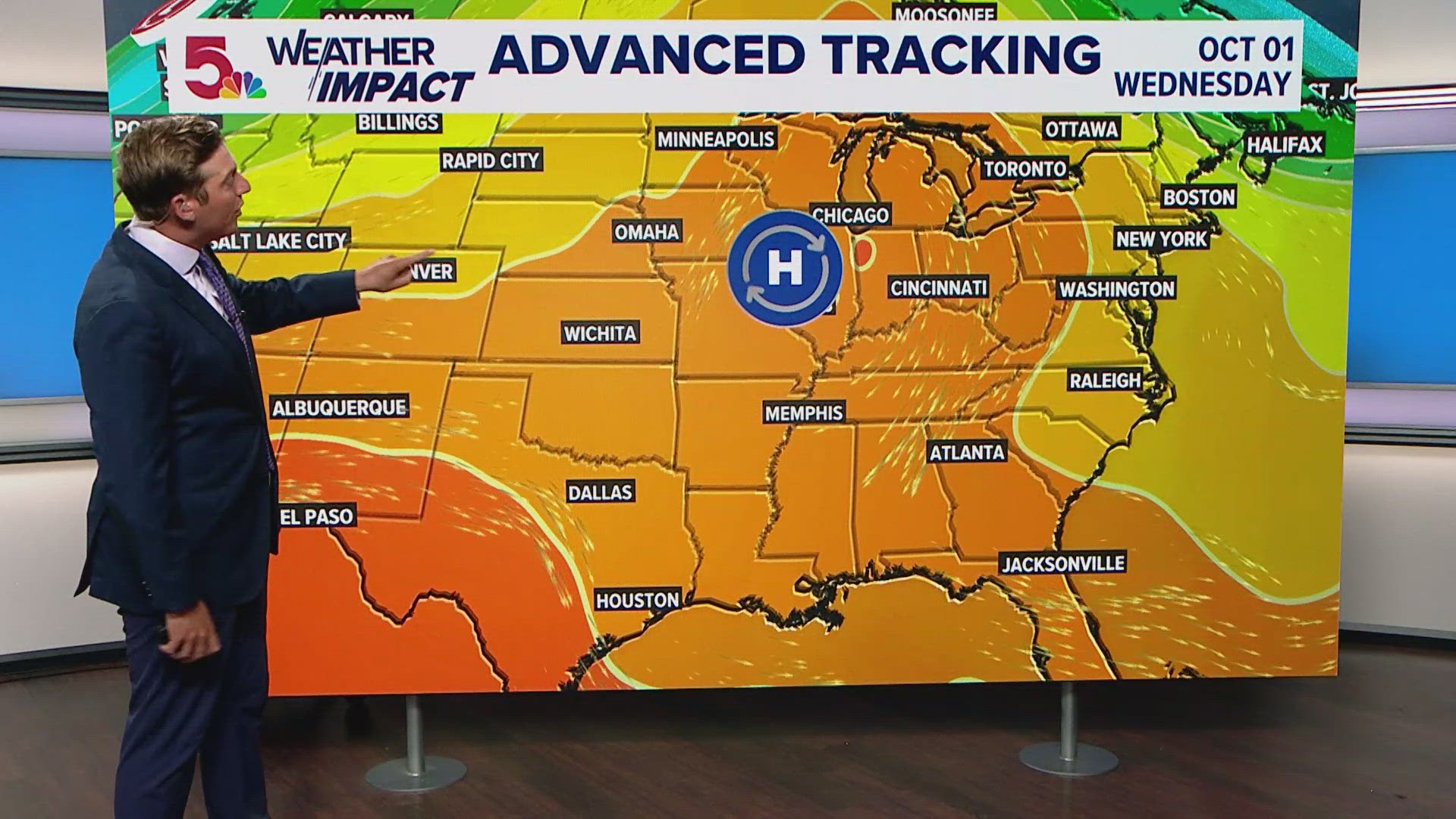Report on Gray Wolf Management and Sustainable Development Goals in the Northern Rocky Mountains
1.0 Executive Summary
This report analyzes the ongoing conflict surrounding the management of gray wolf populations in the Northern Rocky Mountain states of Idaho, Montana, and Wyoming. A recent federal court ruling has mandated that the U.S. Fish and Wildlife Service (USFWS) re-evaluate its decision to deny Endangered Species Act (ESA) protections for the gray wolf, citing a failure to incorporate the “best available science.” This situation highlights significant challenges in balancing conservation efforts with economic interests and underscores the complexities of achieving key United Nations Sustainable Development Goals (SDGs), particularly SDG 15 (Life on Land), SDG 16 (Peace, Justice and Strong Institutions), and SDG 2 (Zero Hunger).
2.0 Legal and Institutional Context
2.1 Federal Court Intervention
In August, the U.S. District Court in Montana ordered the USFWS to revisit its 2024 decision that kept Northern Rocky Mountain gray wolves under state management. The court’s decision, issued by Judge Donald Molloy, identified procedural and scientific shortcomings in the agency’s determination. This legal challenge is the latest event in a protracted “political yo-yo process” concerning the wolf’s conservation status, which has been ongoing since 1995.
2.2 Challenges to Institutional Integrity (SDG 16)
The conflict over wolf management reflects a critical challenge to SDG 16: Peace, Justice and Strong Institutions. The court’s ruling suggests that federal agencies may not be consistently utilizing robust scientific evidence, undermining public trust and institutional effectiveness. The ongoing litigation and legislative proposals to bypass the USFWS threaten the stability and integrity of the Endangered Species Act, a cornerstone of U.S. conservation law.
- Stakeholder Perspectives:
- Environmental groups, such as the Western Watersheds Project, view the ruling as a necessary correction to politically influenced wildlife management.
- Organizations like the Wyoming Wildlife Federation express concern that such legal battles may increase frustration with the ESA, potentially weakening the legislation long-term.
3.0 Ecological Significance and SDG 15: Life on Land
3.1 The Role of a Keystone Species
The gray wolf is a keystone species whose historical decimation led to significant ecological imbalances in the Northern Rockies. This directly relates to SDG 15: Life on Land, which calls for halting biodiversity loss and protecting threatened species. The absence of wolves contributed to:
- An overpopulation of elk.
- A subsequent decline in tree health due to over-browsing.
The reintroduction of wolves has been instrumental in restoring the region’s food web and ecosystem health, demonstrating a tangible success in achieving SDG 15 targets.
3.2 Scientific Debate on Population Viability
A central issue is the scientific definition of a “recovered” population. While numbers have increased from less than 1,000 in the 1970s to approximately 7,000 in the lower 48 states today, scientific analysis presents a more complex picture.
- Genetic Diversity: A 2023 study found that genetic diversity in Northern Rocky Mountain gray wolves has declined, suggesting the population may be below the minimum size necessary to avoid long-term extinction risk. This challenges the adequacy of current management targets.
- Social Ecology: The social structure of wolf packs is critical to their survival. The killing of dominant breeding pairs can destabilize packs and negatively impact genetic health, a factor often overlooked in simple population counts.
- Habitat Connectivity: The USFWS relies on habitat connectivity to ensure genetic flow, yet failed to adequately consider future threats to this connectivity in its decision-making process.
4.0 State Management Policies and Socio-Economic Conflict
4.1 State-Level Management vs. Conservation Goals
Following delisting, management of gray wolves was transferred to Idaho, Montana, and Wyoming. These states have adopted aggressive hunting and trapping policies with the stated goal of maintaining populations just above the minimum threshold required to avoid federal relisting. This approach is viewed by conservationists as antithetical to the spirit of the ESA and the goals of SDG 15.
- Idaho: Aims to reduce its wolf population from over 1,000 to around 500, utilizing a reimbursement system for killed wolves.
- Montana: Seeks a similar reduction to 500 wolves, also offering financial incentives to hunters.
- Wyoming: Maintains a target of 160 wolves, with a large designated “predator zone” where wolves have virtually no protections.
4.2 Balancing Livelihoods and Biodiversity (SDG 2 & SDG 15)
The primary justification for aggressive state management is the protection of livestock, a concern related to SDG 2 (Zero Hunger) and sustainable agriculture. However, data indicates a significant disconnect between perceived and actual threats.
- Federal and state data show that wolves are responsible for less than 0.1% of all cattle losses in Idaho, Montana, and Wyoming.
- This suggests that state policies, which risk undermining the long-term viability of a keystone species (SDG 15), are disproportionate to the documented economic impact on the livestock industry.
5.0 Conclusion and Outlook
The management of the Northern Rocky Mountain gray wolf population is at a critical juncture where legal, scientific, and political interests collide. The recent court decision forces a re-examination of whether current state-led strategies align with the scientific principles of conservation and the broader objectives of sustainable development.
Achieving a sustainable outcome requires:
- Strengthening Institutions (SDG 16): Ensuring that management decisions by agencies like the USFWS are transparent, accountable, and based on the best available independent science.
- Protecting Biodiversity (SDG 15): Moving beyond minimum population counts to a more holistic management approach that considers genetic health, social ecology, and habitat connectivity.
- Fostering Sustainable Coexistence (SDG 2): Developing policies that address the legitimate concerns of agricultural communities with measures proportionate to the actual risks posed by wildlife, thereby balancing economic livelihoods with ecological integrity.
Failure to resolve this conflict through science-based, collaborative governance risks not only the future of the gray wolf but also the integrity of the Endangered Species Act and the United States’ commitment to global sustainability goals.
Analysis of Sustainable Development Goals in the Article
1. Which SDGs are addressed or connected to the issues highlighted in the article?
-
SDG 15: Life on Land
This is the most prominent SDG in the article. The entire text revolves around the conservation and management of a terrestrial species, the gray wolf. It discusses the protection of this keystone species, the health of the Northern Rockies ecosystem, threats from human activities like hunting and trapping, and the importance of biodiversity (specifically genetic diversity). The article explicitly mentions how the decimation of wolves “palpably altered the Northern Rockies’ food web, contributing to a decline in tree health and booming numbers of elk,” directly linking the species to the health of the terrestrial ecosystem.
-
SDG 16: Peace, Justice and Strong Institutions
This SDG is relevant due to the article’s focus on the legal and institutional frameworks governing wildlife management. The central conflict described is a legal one, involving a federal judge’s ruling against the U.S. Fish and Wildlife Service (USFWS). The article details the “political yo-yo process” of listing and delisting wolves, the role of the Endangered Species Act (ESA), the influence of state legislatures on wildlife agencies, and the debate over whether institutions are using the “best available science.” This highlights challenges related to the rule of law, institutional accountability, and transparent decision-making.
2. What specific targets under those SDGs can be identified based on the article’s content?
-
SDG 15: Life on Land
-
Target 15.5: Take urgent and significant action to reduce the degradation of natural habitats, halt the loss of biodiversity and, by 2020, protect and prevent the extinction of threatened species.
The article is centered on this target. The gray wolf is a threatened species whose protection status is under debate. The text discusses recovery efforts since 1995, the current population numbers, and the threat of “large population declines” due to aggressive state hunting policies. The concern that state management aims to keep populations “just above that perilous line” of extirpation directly relates to preventing the extinction of a threatened species.
-
Target 15.7: Take urgent action to end poaching and trafficking of protected species of flora and fauna and address both demand and supply of illegal wildlife products.
This target is addressed through the discussion of illegal and cruel methods of killing wolves. The article highlights a specific incident where a Wyoming man “mauled a wolf with his snowmobile,” leading to a felony charge of cruelty to animals. It also notes that the USFWS’s population models failed to incorporate “illegal hunting,” acknowledging it as a threat to the wolf population that needs to be addressed.
-
Target 15.9: By 2020, integrate ecosystem and biodiversity values into national and local planning, development processes, poverty reduction strategies and accounts.
The conflict between different values is a core theme. On one side, conservationists and scientists advocate for management based on biodiversity values, such as genetic diversity and the wolf’s role as a keystone species. On the other, some state legislatures and ranchers prioritize livestock protection and elk population management, leading to policies that reduce wolf numbers. The judge’s ruling that the USFWS failed to incorporate “the best available science” suggests a failure to properly integrate biodiversity values into national planning.
-
-
SDG 16: Peace, Justice and Strong Institutions
-
Target 16.3: Promote the rule of law at the national and international levels and ensure equal access to justice for all.
The article is framed around the use of the legal system to resolve disputes over environmental policy. Environmental groups brought a case to a federal court, resulting in a ruling that forces a federal agency (USFWS) to adhere to the standards of the law (the Endangered Species Act). This demonstrates the process of promoting the rule of law and using the justice system to hold government bodies accountable.
-
Target 16.6: Develop effective, accountable and transparent institutions at all levels.
The effectiveness and accountability of institutions are questioned throughout the article. The USFWS is criticized for not using “the best available science” and relying on an internal memo instead of peer-reviewed research. State fish and game agencies are described as having “no choice but to abide by” laws created by state legislatures, which are “taking more and more liberties to dictate wildlife management,” raising questions about the effectiveness and scientific integrity of these institutions.
-
Target 16.7: Ensure responsive, inclusive, participatory and representative decision-making at all levels.
The article illustrates a breakdown in inclusive decision-making. The “political yo-yo process” described by Judge Molloy, and the conflicting views of ranchers, conservation groups, scientists, and state and federal agencies, show a highly contentious and non-consensual policy environment. The article highlights how different groups resort to different venues—lobbying at the state level versus litigation at the federal level—because they do not feel the decision-making process is responsive to their concerns.
-
3. Are there any indicators mentioned or implied in the article that can be used to measure progress towards the identified targets?
-
Indicators for SDG 15 Targets
- Population counts of a threatened species: The article provides specific numbers that can be used as indicators for Target 15.5. These include the current population of “some 2,700 wolves across Idaho, Montana and Wyoming,” the historical low of “less than 1,000 wolves” in 1974, and the current estimate of “around 7,000 wolves” in the lower 48 states. State management goals to reduce populations to “around 500 each” in Idaho and Montana are also quantitative indicators of policy direction.
- Measures of genetic diversity: The article mentions a “2023 paper… which found that genetic diversity in Northern Rocky Mountain gray wolves has declined over time.” This serves as a crucial qualitative and scientific indicator of the species’ long-term viability and progress towards Target 15.5.
- Number of legal actions against wildlife cruelty/poaching: The specific case of the Wyoming man being “indicted by a grand jury… on a charge of felony cruelty to animals” after initially being fined only $250 is a direct indicator of law enforcement and judicial action related to Target 15.7.
-
Indicators for SDG 16 Targets
- Judicial rulings on environmental law: The central event of the article, Judge Molloy’s order for the USFWS to “revisit its 2024 decision,” is a clear indicator of the judicial system’s role in enforcing the rule of law and ensuring institutional accountability (Targets 16.3 and 16.6).
- Adherence to scientific standards in policy-making: The critique that the USFWS did not incorporate “the best available science” and instead used an internal memo not subject to “third party peer-reviewer” processes is a qualitative indicator of institutional transparency and effectiveness (Target 16.6).
- Existence of conflicting legislation and policies: The description of state legislatures passing bills that create “a reimbursement system—a bounty program” for killing wolves, which contradicts the conservation spirit of the ESA, is an indicator of a lack of coherent and inclusive decision-making (Target 16.7).
4. Table of SDGs, Targets, and Indicators
| SDGs | Targets | Indicators Identified in the Article |
|---|---|---|
| SDG 15: Life on Land | 15.5: Protect and prevent the extinction of threatened species. |
|
| 15.7: End poaching and trafficking of protected species. |
|
|
| 15.9: Integrate ecosystem and biodiversity values into planning. |
|
|
| SDG 16: Peace, Justice and Strong Institutions | 16.3: Promote the rule of law and ensure access to justice. |
|
| 16.6: Develop effective, accountable, and transparent institutions. |
|
|
| 16.7: Ensure responsive, inclusive, and participatory decision-making. |
|
Source: insideclimatenews.org







